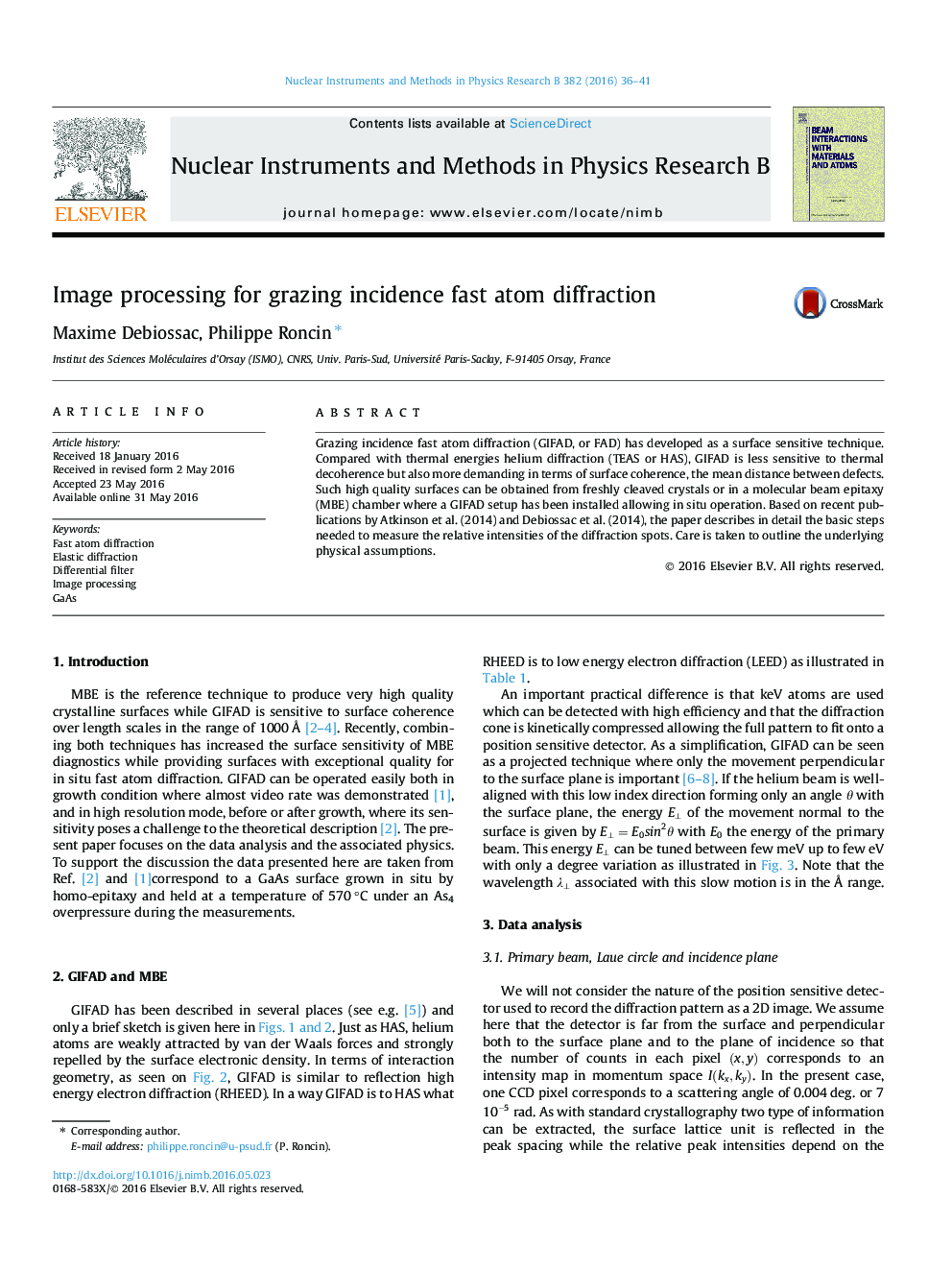| کد مقاله | کد نشریه | سال انتشار | مقاله انگلیسی | نسخه تمام متن |
|---|---|---|---|---|
| 1679508 | 1518639 | 2016 | 6 صفحه PDF | دانلود رایگان |
Grazing incidence fast atom diffraction (GIFAD, or FAD) has developed as a surface sensitive technique. Compared with thermal energies helium diffraction (TEAS or HAS), GIFAD is less sensitive to thermal decoherence but also more demanding in terms of surface coherence, the mean distance between defects. Such high quality surfaces can be obtained from freshly cleaved crystals or in a molecular beam epitaxy (MBE) chamber where a GIFAD setup has been installed allowing in situ operation. Based on recent publications by Atkinson et al. (2014) and Debiossac et al. (2014), the paper describes in detail the basic steps needed to measure the relative intensities of the diffraction spots. Care is taken to outline the underlying physical assumptions.
Journal: Nuclear Instruments and Methods in Physics Research Section B: Beam Interactions with Materials and Atoms - Volume 382, 1 September 2016, Pages 36–41
